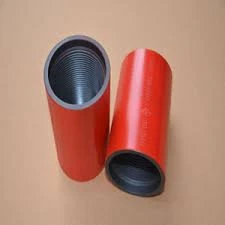- Afrikaans
- Albanian
- Amharic
- Arabic
- Armenian
- Azerbaijani
- Basque
- Belarusian
- Bengali
- Bosnian
- Bulgarian
- Catalan
- Cebuano
- Corsican
- Croatian
- Czech
- Danish
- Dutch
- English
- Esperanto
- Estonian
- Finnish
- French
- Frisian
- Galician
- Georgian
- German
- Greek
- Gujarati
- Haitian Creole
- hausa
- hawaiian
- Hebrew
- Hindi
- Miao
- Hungarian
- Icelandic
- igbo
- Indonesian
- irish
- Italian
- Japanese
- Javanese
- Kannada
- kazakh
- Khmer
- Rwandese
- Korean
- Kurdish
- Kyrgyz
- Lao
- Latin
- Latvian
- Lithuanian
- Luxembourgish
- Macedonian
- Malgashi
- Malay
- Malayalam
- Maltese
- Maori
- Marathi
- Mongolian
- Myanmar
- Nepali
- Norwegian
- Norwegian
- Occitan
- Pashto
- Persian
- Polish
- Portuguese
- Punjabi
- Romanian
- Russian
- Samoan
- Scottish Gaelic
- Serbian
- Sesotho
- Shona
- Sindhi
- Sinhala
- Slovak
- Slovenian
- Somali
- Spanish
- Sundanese
- Swahili
- Swedish
- Tagalog
- Tajik
- Tamil
- Tatar
- Telugu
- Thai
- Turkish
- Turkmen
- Ukrainian
- Urdu
- Uighur
- Uzbek
- Vietnamese
- Welsh
- Bantu
- Yiddish
- Yoruba
- Zulu
Exploring the Benefits of Bull Plugs for Enhanced Performance and Durability
Understanding Bull Plugs The Versatile Tool for Various Applications
Bull plugs, often called blind plugs or pipe plugs, are essential components in several industries ranging from construction and plumbing to automotive and electrical applications. While they may appear simple in design, their functionality and versatility make them indispensable in a variety of contexts. This article aims to explore the different types of bull plugs, their applications, and the reasons behind their widespread use.
What are Bull Plugs?
At their core, bull plugs are fittings used to close the ends of pipes, tubes, or other components. Their primary purpose is to prevent the ingress of dirt, moisture, debris, or other contaminants into a system that could compromise its integrity. Depending on the specific application, they can be manufactured from a variety of materials, including plastic, rubber, and metal. This flexibility in material choice allows them to fit into different environments, whether they are exposed to harsh chemicals, high pressure, or extreme temperatures.
Types of Bull Plugs
Bull plugs come in various sizes and styles to suit different applications. Some common types include
- Threaded Bull Plugs These have a threaded design to screw directly into threaded pipes or fittings, providing a secure seal that can withstand internal pressure. - Non-Threaded Bull Plugs These are typically designed for a tight fit in non-threaded openings, often relying on friction or seals to hold them in place. - Expandable Bull Plugs These plugs can expand once inserted into a pipe or opening, creating a tight seal that can handle varying pressures or flow conditions.
- Cap and Plug Combinations Often used when there is a need for both closure and access, these combinations allow for temporary openings and are widely used in maintenance scenarios.
Applications of Bull Plugs
bull plugs

The applications of bull plugs are as diverse as the types available. Below are some key areas where bull plugs play a crucial role
1. Plumbing In plumbing systems, bull plugs are used to seal off unused connections or to temporarily stop water flow during repairs. This prevents water leaks and contamination.
2. Manufacturing In factories, bull plugs are often used to protect equipment from dust, dirt, and moisture during storage and transportation. They play a crucial role in maintaining the quality of sensitive components.
3. Electrical In electrical applications, bull plugs can prevent moisture from entering conduit systems, helping to keep wiring safe and operational. They also protect against dust accumulation that can cause short circuits.
4. Automotive In vehicle manufacturing and maintenance, bull plugs are used to seal unused openings to prevent contaminants from entering critical systems. They are also employed during painting processes to protect areas from paint overspray.
5. Environmental Protection Bull plugs are utilized in environmental applications to prevent the escape of fluids or gases, contributing to safety and environmental compliance.
Conclusion
Bull plugs may seem simplistic, but their role in various industries cannot be overstated. Their ability to provide a reliable seal and prevent contamination makes them an essential tool in many applications. As industries continue to evolve and the need for effective and reliable sealing mechanisms grows, the importance of bull plugs will only increase. Whether you are in plumbing, manufacturing, automotive, or any other field that requires secure closures, understanding and utilizing bull plugs is key to ensuring the efficiency, safety, and longevity of your systems. In recognizing their value, we can appreciate the innovation that such seemingly simple tools offer in maintaining the integrity of complex systems across the globe.
-
Tubing Pup Joints: Essential Components for Oil and Gas OperationsNewsJul.10,2025
-
Pup Joints: Essential Components for Reliable Drilling OperationsNewsJul.10,2025
-
Pipe Couplings: Connecting Your World EfficientlyNewsJul.10,2025
-
Mastering Oilfield Operations with Quality Tubing and CasingNewsJul.10,2025
-
High-Quality Casing Couplings for Every NeedNewsJul.10,2025
-
Boost Your Drilling Efficiency with Premium Crossover Tools & Seating NipplesNewsJul.10,2025







